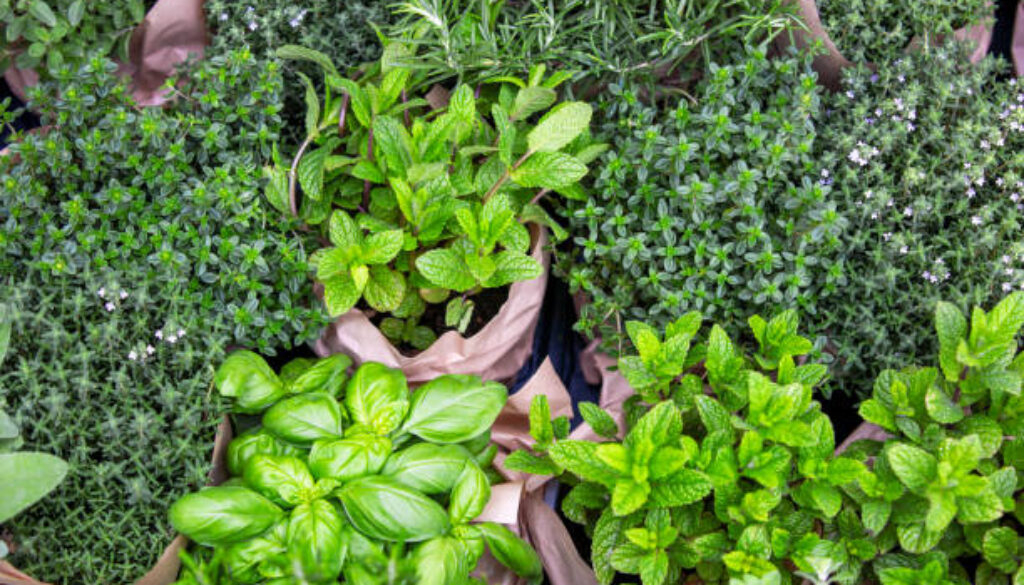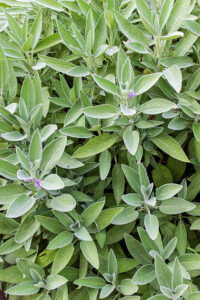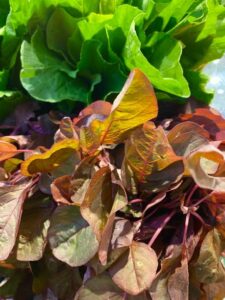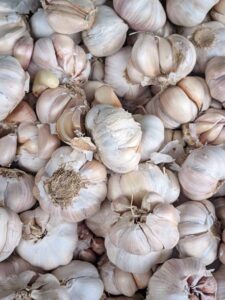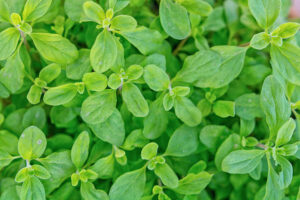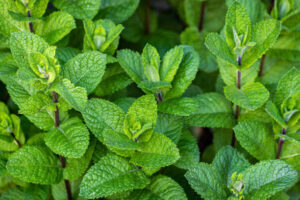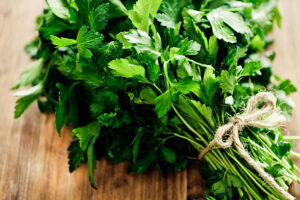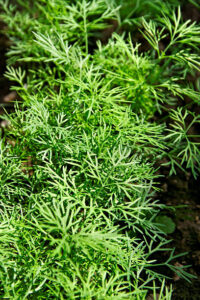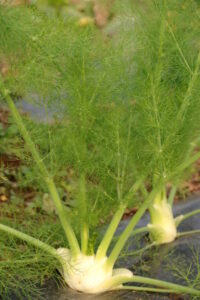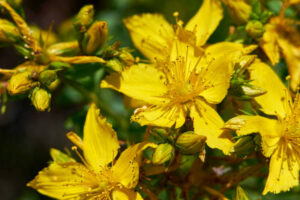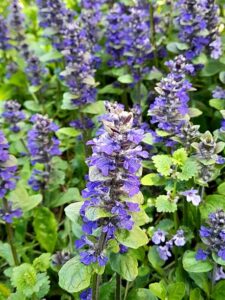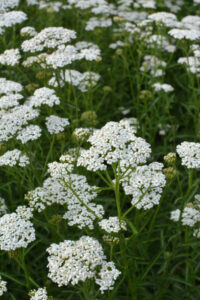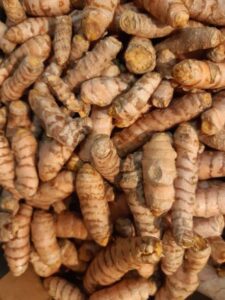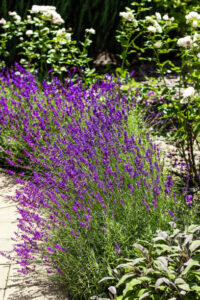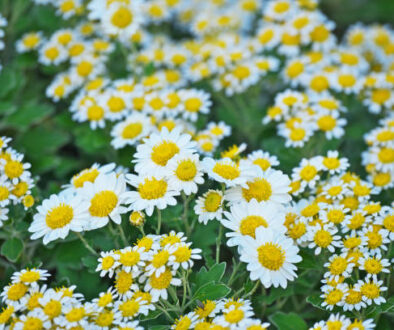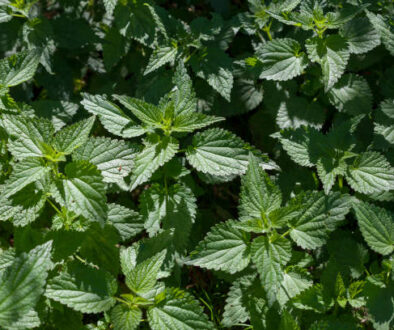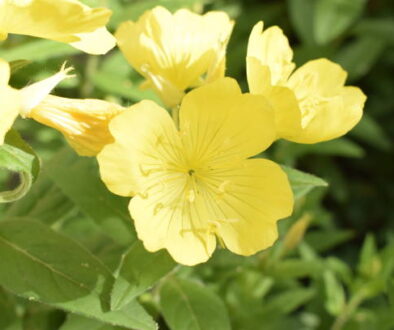28 Essential Herbs You Should Plant In Your Apothecary Healing Garden
This post may contain paid and/or affiliate links. I may earn a small commission at no extra cost to you.
If you’ve ever dreamed of walking outside and picking fresh herbs for tea, cooking, or homemade remedies, an herb garden medicinal space is the way to go.
It’s not just about the flavor; these plants can support your health, help with everyday aches, and even make your yard smell amazing.
Whether you’re working with a small backyard, a flower garden, or just a sunny windowsill for herbs to grow indoors, you can create a setup that works just for you.
By growing your own herbs, you always know exactly what’s going into your food and remedies, no chemicals, no mystery.
Plus, many of these herb garden plants are easy to keep alive and look beautiful in any herbal garden design.
From soothing teas to skin balms and aromatic oils, these plants have you covered.
Now, let’s look at these 28 essential picks for your apothecary herb gardening journey.
Related:
- 12 Medicinal Herbs You Can Grow in Your Garden And Their Benefits
- The 15 Top Herbs You Need in Your Backyard (You’ll Regret Not Growing #10!)
- 16 Most Powerful Healing Plants for Pain Relief: Natural Healing Herbs Medicine
1. Aloe Vera – The Go-To Healing Plant for Skin
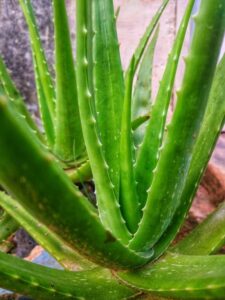
Aloe vera is one of the easiest herb garden plants to grow, and it earns its place in any herb garden medicinal setup.
Known for its thick, juicy leaves, aloe is loaded with gel that can soothe burns, cuts, insect bites, and dry skin almost instantly.
You simply break off a leaf, scoop out the gel, and apply it directly.
Beyond skin care, aloe can be used internally (in moderation) to support digestion.
It loves sunny windowsills and warm spots, making it perfect for both outdoor beds and herbs to grow indoors.
You don’t need a huge space to grow aloe vera.
It thrives in containers, making it an excellent choice for small patios or a herb and flower garden arrangement.
Since it doesn’t need much water, it’s low-maintenance and great for busy gardeners.
Plus, it’s evergreen, meaning you’ll have fresh gel available all year round for quick, natural remedies.
2. Chamomile – Calming Tea at Your Fingertips
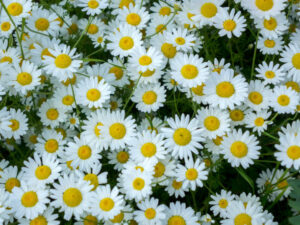
Chamomile is a gentle but powerful gardening herb that works wonders for relaxation, digestion, and minor skin irritations.
Its daisy-like flowers are perfect for making calming teas that can help you sleep or ease an upset stomach.
It grows best in sunny spots with well-drained soil, making it a charming addition to your herbal garden design.
One of the best things about chamomile is how easy it is to harvest and store.
You simply pick the blooms, dry them, and keep them in airtight jars for year-round use.
💡Quick Note: Learn How To Transform A Typical Money-Draining House Into A Tiny Profitable Off-The-Grid Homestead. Click Here To Get Started Now!
Having a stash of dry herbs like chamomile means you always have a soothing drink on hand.
Plus, those bright white petals add a cheerful touch to your garden, making it a favorite in both homestead gardening and decorative herb and flower garden layouts.
3. Lavender – Stress Relief in Bloom
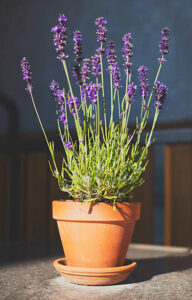
Lavender is famous for its calming scent and beautiful purple blooms, making it one of the most beloved herb garden plants.
In a herb garden medicinal collection, it’s a superstar for reducing stress, improving sleep, and even keeping pests away.
The flowers can be used in teas, sachets, and homemade essential oils.
If you’re working on an herbal garden design, lavender brings both form and function.
It thrives in sunny, dry conditions and works beautifully along pathways or as a border plant.
Once harvested, you can hang bunches to dry for long-lasting dry herbs.
Whether you grow it in your yard or in containers for herbs to grow indoors, lavender offers beauty, fragrance, and practical healing uses all year.
4. Peppermint – A Burst of Refreshment
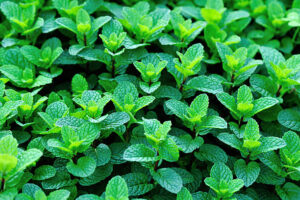
Peppermint is an essential gardening herb for digestion, headaches, and even natural pest control.
The fresh leaves make a refreshing tea, and the essential oils can help relieve tension.
Just be careful, it’s a fast spreader, so it’s best grown in pots to keep it in check.
In a herb and flower garden, peppermint adds lush greenery and a fresh scent that’s especially welcome on hot summer days.
It loves moist soil and partial shade, making it a good companion plant for vegetables.
If you like herbs to grow indoors, peppermint adapts well to pots on a sunny kitchen windowsill, giving you quick access for teas, desserts, and remedies.
5. Calendula – The Golden Healer
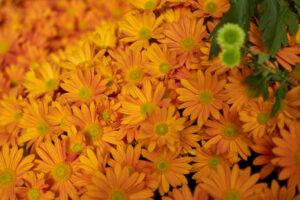
Calendula’s bright orange blooms are more than just pretty; they’re packed with skin-healing properties.
In a herb garden medicinal collection, calendula shines for treating minor wounds, soothing rashes, and supporting skin health.
Its petals can also be brewed into tea to help with inflammation and digestion.
It’s a hardy plant that thrives in most soils, making it perfect for homestead gardening.
Once harvested, you can dry the petals for later use or infuse them in oil for homemade salves.
🌼Don’t You Dare To Miss Out On This Kit! The Medicinal Garden Kit is a Must-Have for Your Garden. Click Here to Access Now!
Calendula is also a natural pest repellent, so planting it near your vegetables can benefit your entire herb and flower garden.
6. Rosemary – Memory and Flavor in One
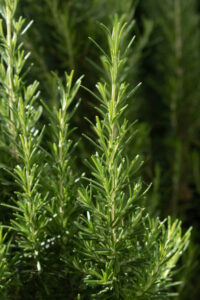
Rosemary is a fragrant evergreen that brings both flavor and health benefits to your herb garden plants.
Known for improving memory and concentration, it’s also packed with antioxidants.
In cooking, it adds depth to roasted meats and vegetables.
In a herbal garden design, rosemary works beautifully as a border plant or even a decorative shrub.
It loves sunny spots and well-drained soil, and once established, it’s very low-maintenance.
You can snip sprigs year-round, and drying them ensures you always have this flavorful dry herb in your kitchen.
7. Echinacea – Immune System Support
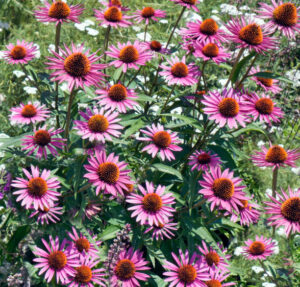
Echinacea is a must-have in any herb garden medicinal setup.
It’s well-known for boosting the immune system and helping to shorten colds.
Its bold, daisy-like blooms attract bees and butterflies, adding life to your herb and flower garden.
It thrives in full sun and well-drained soil, making it a reliable choice for homestead gardening.
Once harvested, you can use its roots and flowers to make teas or tinctures.
Having echinacea among your herb garden plants means you’re always prepared for the cold season with a natural remedy at hand.
8. Thyme – Small Leaves, Big Benefits
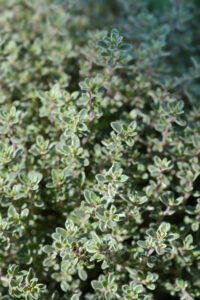
Thyme is a hardy gardening herb with powerful antibacterial properties.
It’s great in teas for sore throats and makes an excellent seasoning for countless dishes.
It thrives in poor soil and sunny spots, so it’s perfect for rock gardens and borders in your herbal garden design.
You can grow thyme both outdoors and as one of your herbs to grow indoors.
Once dried, thyme’s flavor intensifies, making it one of the best dry herbs to keep in your kitchen year-round.
Plus, it’s virtually pest-free, making it a low-effort addition to any herb garden plants list.
9. Lemon Balm – Mood and Sleep Support
Lemon balm is a fresh, citrus-scented herb perfect for easing stress and supporting restful sleep.
In a herb garden medicinal layout, it works well in teas and skin-soothing balms.
It prefers partial shade and moist soil, so it’s easy to tuck into unused corners.
Want to discover the secrets the interior decorators use? This guide comes with all the interior design principles and stylish home decoration. Click Here To Access Now!
As part of your herb and flower garden, lemon balm adds bright green leaves that look as good as they smell.
You can also grow it indoors, giving you a steady supply for teas.
Once harvested, drying the leaves ensures you have this uplifting dry herb available anytime.
10. Sage – The All-Purpose Healer
Sage is a classic in any herb garden medicinal plan.
Known for its antibacterial and anti-inflammatory properties, it’s often used for soothing sore throats and aiding digestion.
Its gray-green leaves also bring a soft, calming tone to your herb and flower garden.
Fresh or dried, sage adds rich flavor to meats, stews, and roasted vegetables.
This hardy gardening herb thrives in sunny spots and well-drained soil.
Once established, it needs little attention and can last for years.
You can easily dry sage leaves for your pantry or infuse them into oil for herbal remedies.
In herbal garden design, it works well as a border plant and pairs beautifully with colorful blooms for a visually striking yet functional garden.
11. Basil – Flavorful and Healing
Basil is a staple in cooking, but it’s also packed with antioxidants and antibacterial compounds.
In your herb garden plants collection, basil serves both culinary and medicinal roles, great for improving digestion and supporting immune health.
Fresh leaves make delicious pesto, salads, or teas.
Basil loves warmth and sunlight, making it perfect for summer planting in your herb and flower garden or containers for herbs to grow indoors.
It’s fast-growing, so you can harvest it multiple times a season.
If you’re into homestead gardening, basil is a must because it pairs perfectly with tomatoes and peppers, helping improve their flavor and growth.
12. Garlic – Nature’s Antibiotic
Garlic is one of the oldest gardening herbs used for health.
It’s packed with natural antibacterial and antiviral compounds, making it great for fighting colds and boosting immunity.
Fresh garlic also adds incredible flavor to countless dishes.
You can grow garlic in garden beds or large pots. Plant the cloves in the fall, and by summer, you’ll have a harvest ready.
In herbal garden design, garlic’s tall green shoots can add structure alongside other herb garden plants.
Once cured and dried, garlic stores well, giving you long-lasting flavor and natural healing power.
13. Oregano – Immune-Boosting and Flavorful
Oregano is loaded with antioxidants and compounds that support the immune system.
Its strong flavor makes it a favorite in Mediterranean cooking, but it also works well as a tea for respiratory support.
This hardy herb thrives in sunny, well-drained soil.
It’s drought-tolerant, so it fits perfectly into low-maintenance herb and flower garden designs.
Drying oregano intensifies its flavor, making it one of the most useful dry herbs for your pantry.
14. Mint – Cooling and Digestive Aid
Mint is refreshing, fragrant, and perfect for teas, desserts, and even savory dishes.
It’s known for soothing digestion and freshening breath.
As part of your herb garden medicinal collection, it’s one of the easiest plants to grow.
💡Quick Note:💚Love Gardening? You’ll love this Kit! The Medicinal Garden Kit is a Must-Have for Every Gardener. Click Here to Access Now!
Because mint spreads quickly, it’s best grown in containers, especially if you’re into herbs to grow indoors.
It thrives in partial shade and moist soil, making it a great companion for vegetables in homestead gardening setups.
15. Parsley – Nutrient-Rich and Versatile
Parsley offers far more than just garnish. It’s loaded with vitamins and minerals and helps support kidney health.
Fresh parsley can also freshen breath naturally.
It grows well in sunny or partially shaded spots, making it flexible for herbal garden design.
In your herb and flower garden, its bright green leaves pair well with colorful blooms, creating a fresh, vibrant look.
16. Dill – Culinary Herb with Digestive Benefits
Dill adds a delicate, feathery texture to your herb garden plants.
It’s perfect for flavoring fish, salads, and pickles, and its seeds help with digestion.
Dill prefers sunny spots and well-drained soil.
It self-seeds easily, so once it’s in your herb garden medicinal setup, you’ll likely see it return year after year.
You can also dry dill leaves for long-term storage, adding a fresh taste to dishes even in winter.
17. Fennel – Sweet Flavor and Soothing Qualities
Fennel’s seeds and bulbs are great for easing digestion and adding a sweet, anise-like flavor to meals.
It’s a tall, attractive addition to your herb and flower garden.
Fennel thrives in sunny, well-drained soil. The seeds can be collected, dried, and stored for teas or seasoning.
In herbal garden design, its height makes it a great backdrop plant.
18. Lemon Thyme – Citrus-Infused Healing
Lemon thyme combines the antibacterial benefits of thyme with a light citrus flavor.
It’s great in teas, marinades, and as a natural remedy for colds.
It’s a low-maintenance gardening herb that thrives in sunny, dry spots.
As one of your dry herbs, it keeps its flavor well, making it a year-round favorite in the kitchen.
19. St. John’s Wort – Mood Support
St. John’s Wort is famous for supporting emotional well-being.
Its sunny yellow flowers can also be infused into oil for skin-healing purposes.
It prefers sunny spots and can spread quickly, so give it space in your herb and flower garden.
Harvesting and drying the flowers ensures you have this powerful herb garden medicinal ally when you need it.
20. Hyssop – Respiratory Health Support
Hyssop is a fragrant plant with beautiful purple-blue flowers.
It’s traditionally used in teas for respiratory health and sore throats.
Learn How To Transform A Typical Money-Draining House Into A Tiny Profitable Off-The-Grid Homestead. Click Here To Get Started Now!
Hyssop thrives in sunny, dry conditions, making it great for homestead gardening in low-water areas.
As part of your herbal garden design, it also attracts pollinators.
21. Valerian – Natural Sleep Aid
Valerian root is a well-known herbal remedy for insomnia and anxiety.
Its tall stems and clusters of white or pink flowers add elegance to any herb garden plants collection.
It prefers moist soil and partial shade. You can harvest the roots in the fall, dry them, and store them for teas or tinctures.
22. Yarrow – Ancient Healing Herb
Yarrow has been used for centuries to stop bleeding and reduce inflammation.
Its feathery leaves and clusters of tiny flowers make it an attractive herb and flower garden choice.
Yarrow thrives in poor soil and full sun, so it’s perfect for herbal garden design in tough conditions.
Once dried, it’s a valuable dry herb for first-aid use.
23. Turmeric – Anti-Inflammatory Powerhouse
Turmeric’s golden root is a potent anti-inflammatory and antioxidant.
It’s a must-have in any herb garden medicinal collection.
It needs warmth and humidity to grow well, making it a great choice for herbs to grow indoors in cooler climates.
Once harvested and dried, turmeric powder can be stored for cooking and remedies.
24. Ginger – Warming and Healing
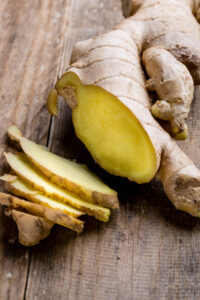
Ginger is perfect for soothing nausea, aiding digestion, and adding warmth to recipes.
Fresh ginger root is easy to store and use in both sweet and savory dishes.
It grows best in warm, humid conditions, so it’s ideal for herbs to grow indoors in pots.
In herbal garden design, ginger’s lush leaves bring a tropical feel to your space.
25. Catnip – Relaxation for People and Pets
Catnip isn’t just for cats—it can help humans relax and sleep better. The leaves can be brewed into a calming tea.
It’s an easy-to-grow gardening herb that thrives in sunny spots.
In your herb and flower garden, it adds soft texture and pale lavender blooms.
26. Comfrey – Fast-Growing Healer
Comfrey’s large leaves are traditionally used in salves for bruises, sprains, and muscle pain.
It grows quickly and produces plenty of foliage for herbal remedies.
It prefers rich soil and partial sun. In homestead gardening, comfrey is also used as a nutrient-rich compost booster.
27. Bay Laurel – Aromatic and Medicinal
Bay leaves are a kitchen staple, but they also have antimicrobial benefits.
Fresh or dried, they add depth to soups and stews.
Bay laurel grows well in pots, making it a good choice for herbs to grow indoors.
In warmer climates, it can be part of your herb and flower garden year-round.
28. Marjoram – Gentle and Healing
Marjoram is a sweet, mild herb used for flavoring dishes and soothing digestion.
Its delicate leaves also have calming effects when brewed into tea.
It grows best in sunny, well-drained spots. Once dried, marjoram is a fragrant addition to your pantry, making it a versatile part of your herb garden medicinal setup.
Conclusion
An herb garden medicinal space is more than just a collection of plants—it’s a living apothecary.
Whether you’re planting in a large herb and flower garden, working on a herbal garden design for a small space, or simply keeping a few herbs to grow indoors, each of these plants brings beauty, flavor, and healing benefits.
With just a little care, your gardening herbs can provide fresh remedies, aromatic teas, and flavorful cooking ingredients for years to come.
FAQs
- Do medicinal herbs grow well in containers?
Yes, many herb garden plants like peppermint, rosemary, and basil thrive in pots, making them perfect for patios or herbs to grow indoors. - How should I store my herbs for long-term use?
The best way is to create dry herbs by hanging them upside down in a cool, dark place, then storing them in airtight jars. - Can I mix herbs with flowers in the same garden?
Absolutely! A mixed herb and flower garden not only looks beautiful but can also deter pests and attract pollinators. - What’s the easiest medicinal herb for beginners?
Aloe vera is one of the easiest to maintain and offers quick, practical benefits, making it a great starter for homestead gardening or a small herbal garden design.
